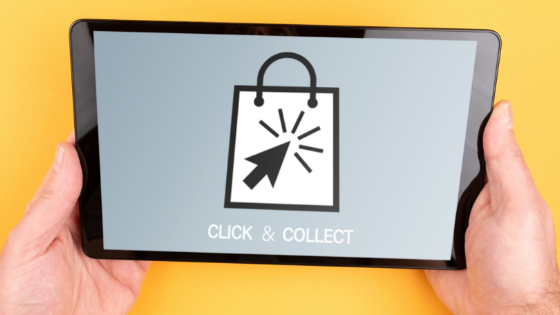In constant evolution, the e-commerce sector is constantly reinventing itself to attract more and more customers. And the year 2022 will be no exception. What are the new practices to put in place? Overview of the e-commerce trends for 2022.
112 billion euros, that's what the e-commerce sector generated in 2020, according to the annual report of the FEVAD, with 1.5 million additional buyers. We can say it: online shopping is definitely part of our consumption habits. But customers' needs and behaviors are constantly changing, so it's important that brands know how to adapt and find new and more innovative ways to satisfy them. And if in 2021, omnichannel and mobile sales were the order of the day, what about in 2022? Here are the 7 trends to watch closely this year.
The omnichannel sales
The many confinements and subsequent health measures have developed omnichannel. Consumers are no longer satisfied with a single channel in their buying journey. They may see a product on a social network, check the website on their phone, use comparison shopping on their computer and buy at a retail outlet. It is therefore essential to combine these multiple channels in order to optimize the shopping experience, leading to better customer satisfaction and, as a result, increased sales.
Online comparison shopping, Google Shopping, product catalogs on Pinterest, stores on Instagram and Facebook, Google Ads campaigns, mobile app, chatbots and marketplaces are the playgrounds on which to develop your brand to spread the shopping experience of your consumers and improve your conversion rate.
Please note: These are often quite complex paths to text, so it may be wise to think about an automation strategy. Mr Suricate can notablyto help you automate your omnichannel functional tests.

Augmented reality
One of the main reasons why consumers don't buy online is that they don't have the opportunity to see or try the product. The solution? Opting for augmented reality. Since 2020, Shopify has offered the Shopify AR feature, which allows e-commerce companies to create their shopping experiences in augmented reality to showcase their products. And the results are in: according to the e-commerce platform, interactions with products with AR (Augmented Reality) content showed a 94% higher conversion rate than products without AR. So there's a good chance that more and more brands will get on board in 2022.
Please note: If you decide to use augmented reality, you should carry out graphical comparison tests to ensure that the visual rendering of the different pages is accurate at different stages of your site.
The circular economy
In 2020, 45% of consumers said they had already bought a product from the circular economy on the internet*, according to a study by Fevad and Médiamétrie. A figure that has certainly increased in the last two years with the ecological awareness that is taking hold of the planet. The circular economy consists of designing products that can be reused, by repairing them or reusing spare parts. More and more brands are launching initiatives of this kind. For example, Ikea has committed to producing 100% circular products (raw materials, recycled products, remanufactured, refurbished, reused) or using only renewable and recycled materials by 2030.
*Fevad and Médiamétrie, 2020

The subscription
A new customer loyalty format is emerging more and more in the e-commerce world, especially in the food, clothing or flower delivery sectors: the subscription program. It allows consumers to choose to periodically receive one or more items they buy often. Rather than having to go to the relevant site each time they need the product, the brand automatically sends it or them at a chosen frequency (weekly, biweekly, monthly, quarterly). This saves customers a lot of time, which they really appreciate, not to mention that it prevents them from running out of the product(s).
Note: A feature such as subscription needs to be tested regularly to ensure that it behaves as required. Even if its criticality level is not high, scenarios should be set up to ensure that the user experience is as complete and seamless as possible.

Virtual agents
Customer satisfaction and relationship will be at the heart of e-commerce strategies in 2022. And one of the most important points not to be neglected is real-time conversations with consumers. More and more retailers have understood this and have implemented virtual agents. Based on artificial intelligence, these agents aim to engage in exchanges at the right time. They can provide information or offer personalized advice based on the user's responses. According to a study by Botmind in 2021, there is an increase of +27% of customer satisfaction on average among merchants who integrate a virtual agent to their site.
*Botmind, 2021
Note: Virtual agents fit perfectly into a test automation strategy. After all, what better way to test automated responses than with automated functional tests?

The click and collect
Since the first containment in March 2020, merchants and e-tailers with physical stores have had to reinvent themselves to survive. The click and collect has become more and more popular and is now part of the consumer habits. This mode of purchase has many advantages for customers: they can pick up their packages whenever they want and they have no delivery fees. In 2022, click and collect will continue to grow and be one of the most popular shopping options for consumers. If you don't already offer it, it's now or never!

Ecology
With the multiplication of e-commerce sites available to them, consumers have more choices and they tend to turn more towards brands that integrate ecology into their strategy. When we know that 78% of French people say they are influenced by the ethical responsibility of brands* and that 77% would be ready to give up buying a brand's products if its production methods are harmful to the environment*, e-commerce companies have every interest in adopting an eco-responsible approach, whether it is at the level of the product itself, but also in terms of shipping methods (packaging, carriers used).
*Sustainable Brands 2021 study conducted by Imediacenter in partnership with LSA and its research firm Infoprodigital
*survey of the Leboncoin site in 2021




.jpg)

